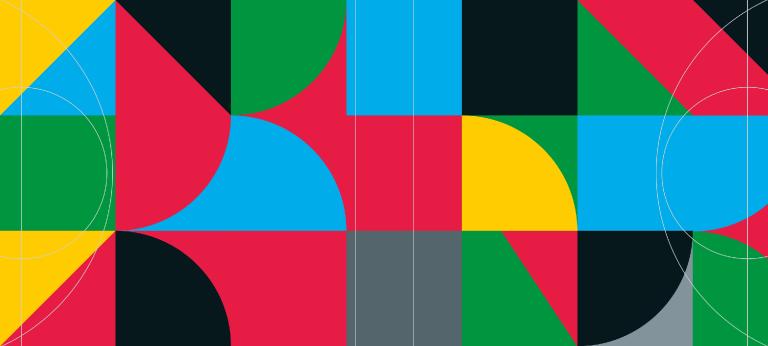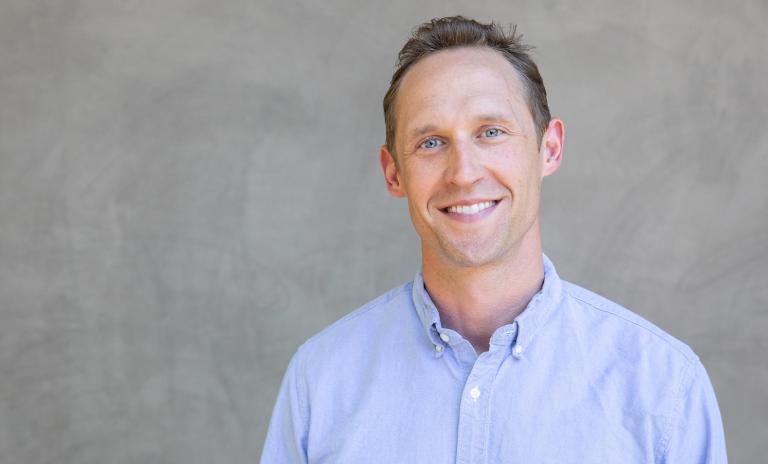Performance: Faster, Higher, Stronger
![{[downloads[language].preview]}](https://www.rolandberger.com/publications/publication_image/ta40_en_cover_3_download_preview.jpg)
Think:Act explores all factors related to performance for individuals and teams, with insights into metrics, AI, experimentation and authentic leadership.


by Emanuele Savettiere
Photo by Patrick Beaudouin
Read more on the topic “Performance”
Jeremy Utley, an expert on innovation, leadership, creativity and lateral thinking, on how to unleash our creativity and break free from the myth that it takes only one truly brilliant idea to succeed.
Breakthrough innovation is the lifeblood of progress, the driving force behind some of the world's most transformative technologies and companies. But how does one come up with the next big thing? How does one come up with the first kernel of an idea? How does one break out of the creativity rut?
A mistake a lot of us make is assuming that for breakthrough innovation, we need to find that one good idea. But if Jeremy Utley is to be believed, more ideas lead to better outcomes. Utley, Director of Executive Education at the Stanford d.school and co-author with Perry Klebahn of Ideaflow: The Only Business Metric That Matters, challenges the common perception that one good idea is the key to success. He explains why.

You define the idea as a “connection”. Why?
My study of the underlying neuroscience has led me to realize that an idea is a bridge between two things already in your mind. The conventional view of ideas as coming from nowhere or being built from nothing lacks practicality and is not helpful. When you hold onto such thinking, you're essentially searching for something to materialize from nothing – this is not beneficial in terms of operating.
For breakthrough innovation how does the quantity of ideas drive quality?
Research by our colleague Dr. Bob Sutton and his PhD student, Andrew Hargadon, illuminates a fact that very few realize: it takes thousands of ideas to have a commercially successful innovation. This accords with Dr. Dean Keith Simonton's famous “Equal Odds rule,” which suggests that to produce quality ideas, one should generate a large quantity of material. Therefore, we advocate a shift in focus from quality to quantity: from “a good idea,” to "lots of potential solutions.” What's the best way to come up with "lots"? It turns out, it's all about input. I've learned from world-class designers and breakthrough thinkers that they have honed the instinct to seek out fresh inputs to drive fresh thinking. And the practice of innovation is really about honing that instinct: new input, information and inspiration.
There's a great piece of research called the Creative Cliff illusion, where Brian J. Lucas and Loran F. Nordgren basically studied people's expectations of the creativity or the usefulness of their ideas over time. Most people had this expectation that at some point, their creativity would fall off a precipitous cliff. Over time it goes down, and then creativity gets used up. Yet when they actually studied people, they found their creativity persisted for much, much longer than they expected and oftentimes actually increased over time.
What are the variables that actually affect the trigger? The slope of that curve? Does it go down? Does it go up or remain flat? The biggest variable that affected the slope of the curve the most was someone's expectation of whether good ideas would keep coming. The person who expected their best ideas would come early not only did they have less ideas, but they had worse ideas as well. So your expectation of when ideas will come really matters.
One way that you can think about volume or quantity: it's easy to think, “Oh, come up with your 1,000 ideas on the spot.” The other variable you play with is time: do I have to solve this immediately? Donald MacKinnon, a World War II spymaster, who was obsessed with this problem of creative productivity, commissioned studies of architects to find what distinguishes the most incredible practitioners from the rest of the field. He found the most eminent practitioners delayed decisions. They practice this “productive procrastination” whereby they did not decide. They opened themselves up to new inputs, new information and new inspiration by not deciding. Seeking new input doesn't always feel efficient, but then, innovation isn't really efficient. The present obsession with efficiency causes many to overlook more effective tactics. Breakthrough thinkers wage war against “the tyranny of efficiency” by creating space for what's effective instead.
"The present obsession with efficiency causes many to overlook more effective tactics. Breakthrough thinkers wage war against ‘the tyranny of efficiency’ by creating space for what's effective instead."
How can we successfully manage the inputs we receive from outside to maximize the impact we achieve?
Inputs are important. Many people who aspire to lead a creative life or fail to recognize the value of that tend to focus solely on problem-solving. When you think about that, you're often concerned with the output. But what's the answer? The brain's just like anything else. When we consider the outputs of our thinking, we realize that they depend on the inputs we receive. Therefore, we call this kind of thoughtfulness about a deliberate pursuit of input inspiration. Unlike those of us from corporate environments, that is a design word that means something. To me, it is necessary to create space for looking even when you don't know what you're looking for.
If you're aware of a problem that needs to be solved or needs a solution, you can also say that you require input or stimulation. Most people don't have any routines or practices around seeking inputs. They simply sit here, look up and think. That would be like trying to solve a problem without any new information.
Have you seen any organizations that manage well this “productive procrastination” that you mentioned before, where they give people the leeway to come up with good ideas, take their time, and be deliberate about it?
Jeff Bezos, the seminal entrepreneur of our generation, would have two free days per week when he blocked out his calendar to avoid meetings. Atul Gawande, the great surgeon and author who wrote Being Mortal, said in a recent interview he always schedules unscheduled time; if not, he would have no room to think.
If you look at that timescale, what's happening there is you're giving your brain space to what scientists refer to as incubate. The standard cognitive model for creativity involves several phases, including preparation, incubation, illumination and verification. What is the necessary precondition to the illumination, which represents the goal for most? It is the incubation, besides gestating, considering, marinating, etc. Cognitive science argues that what precedes the breakthrough is the consideration space.
Jeremy Utley is the director of executive education at the Stanford d.school and adjunct professor at Stanford's School of Engineering. An expert on innovation, leadership, creativity and lateral thinking, he co-wrote the book Ideaflow: The Only Business Metric That Matters together with Perry Klebahn.
From practical experience, it is easier to focus on volume than variety: as humans we tend to fixate on our first ideas and find it hard to deviate very far from them. How should we deal with that?
This cognitive bias is called the Einstellung Effect. Most recently, researchers at Oxford have demonstrated this, but it goes all the way back to Karl Duncker and even Abraham Luchins in the 1940s. What they have found is that when we think of a solution, we fixate on it. We stop seeking other solutions even though the longer you search, the better the solution. We become blinded to better solutions. They've demonstrated this – using eye-tracking technology – even with expert chess players. You tell them there's a better move on the board, and even if they say they're looking for it, they just keep going back to the same move. They have already decided what they're going to do.
Back in 1942, Abraham Luchins and his wife, Edith, had a protocol called “introducing an interrupt”. The “interrupt” could be as simple as a simple phrase: “Remember to look for all the possible solutions.” Instead of looking for the correct answer, we suggest trying lots of answers. Therefore, you increase almost inevitably, not only the volume but also the variation in one's thinking. The quality of one's thinking is as much a function of variation as it is of volume. As a result of this process, you somewhat dislodge that Einstellung Effect.
Innovation means getting out of your comfort zone, which is inherently unnerving.
For me, the key comes down to what you can control. You cannot convince your boss of anything – what you can do is control your sphere of influence. If you hear of the value of having a minimum failure threshold, don't try to convince your boss to implement a minimum failure threshold. You implement a minimum failure threshold amongst your team. These knots become complicated because we're looking to someone else to do something different. And the truth is, if we ourselves started interacting with and managing differently the spheres of control that we have, loads would change.
"Most people don't have any routines or practices around seeking inputs. They simply sit here, look up and think."
What should a manager who is committed to promoting innovation have in his or her toolkit?
The key to valuing alternatives and options is to request them from your team. There are simple ways to accomplish this. For instance, you can adopt the approach used by Bob McKim at Stanford, who would ask to see three alternatives consistently over the years. Similarly, Astro Teller at Google X prefers to receive five ideas whenever the A-Team presents something new, emphasizing the importance of multiple perspectives.
Alternatively, you can employ simpler yet equally elegant interfaces. A powerful question a leader could ask is, “What else are we trying?” Considering that we are venturing into something new, the probability of the element we've chosen being successful is reasonably lower than our standard hit rates. Hence, it stands to reason we ought to be trying to do more than one thing.
What are some shared traits and backgrounds of successful innovators? What are the common barriers to innovation in companies?
One of the things that stands in the way is a prominent leader who says, “Don't bring me problems but bring me solutions.” That's the common parlance of a strong leader. But I don't believe that's how innovative leaders work. Innovators and leaders love problems. They want their people to be on the lookout for problems.
One of the assignments we've had at Stanford for the last 60-plus years is what we define as “keep a bug list”: a list of things that bug you. If you start to cultivate your sensitivity to things that bother you, what you find is you become aware of new opportunities to innovate, so one of the greatest things that a leader can do is actually cultivate a problem awareness among their team.
What role does time play in the creative process?
A lot of folks falter in innovation because they say, “I don't have time to do anything differently.” Then make the time for it.
I have a post-it note on my desk that says “Schedule Tetris blocks.” What does that mean? For many of us, the way we interact with our schedule is like “We're playing Tetris.” These blocks are coming in, and we're just trying to fit everything in. And then, if you hit pause on the Tetris game at any time, you look at it and you go: “Well, I have no space for ideation.” I go: “Yeah, it's because you've been fitting everything in.” Why not create space for ideation or experimentation? Do you think you are going to need to come up with ideas next year? Yes. Is there time on your calendar to come up with ideas? No. That's what got you into this problem: the attitude of I have nothing going on.

![{[downloads[language].preview]}](https://www.rolandberger.com/publications/publication_image/ta40_en_cover_3_download_preview.jpg)
Think:Act explores all factors related to performance for individuals and teams, with insights into metrics, AI, experimentation and authentic leadership.
